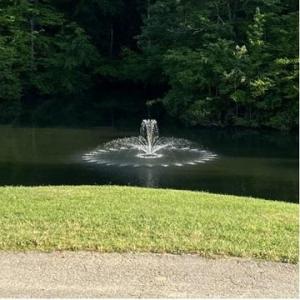Fountain pumps are made to provide water flow to fountains and other devices used in residential, commercial, and industrial applications for aesthetic and aeration purposes. Fountain pumps can be set up for use indoors or outdoors, and they can be distinguished by the size of the pool or pond and by whether they are used for decorative or practical purposes. Some fountain pumps, which can be used in conjunction with a good pump to produce unique garden or landscape elements like waterfalls, are even solar-powered.
Fountain pumps can be divided into different types based on a variety of criteria, including operating mode, intended use, and whether the pump is submersible or exterior.
Operation
Each pump is made to function using the dynamic or positive displacement principle. Positive displacement pumps use expanding and contracting chambers to transport fluids, whereas dynamic pumps—and the subtype of these pumps known as centrifugal pumps—use the momentum and velocity of the fluid to create pump pressure. Positive displacement pumps provide a constant flow suitable for creating high pressures (and low flow rates) with high-viscosity fluids, while dynamic pumps produce a variable flow suitable for producing high flow rates with low-viscosity fluids.
The majority of fountain pumps are centrifugal pumps, which pressurize water by employing centrifugal force generated by the rotation of an impeller. A fountain pump works similarly to a sump pump, except instead of pumping water out of the pond or reservoir, it feeds it back in. In particular, the pump transfers water to a device that sprays water from the surface, such as an aerator or a fountain. The oxygen is gathered by the free-flowing water when it returns to the surface, allowing microbial action to break down wastewater or oxygenating fish in ponds or farming tanks.
Application
Depending on the intended use, there are two sorts of fountain pumps: commercial and industrial.
Commercial fountain pumps are designed primarily for ornamental and aeration uses and are available in both indoor and outdoor variations. When the fountain’s gear is housed in an above-ground reservoir or sump rather than a pond or pool, decorative fountain pumps can also be employed in tabletop or garden fountains.
Small indoor fountains and decorative items use indoor pumps, which typically have low flow rates.
Outdoor garden fountain Pumps can move a lot more water per hour than those for inside fountains. They are utilized with outdoor fountain installations for aesthetic purposes and for aeration in swimming pools and ponds.
Industrial fountain pumps are employed in the aeration of industrial wastewater, sewage treatment, and water treatment for municipal usage. They are often built to deliver larger flow rates and pressures for a range of media and are more durable than consumer equivalents. Fountain pumps are also used to move stagnant water to lessen the growth of algae and mosquito populations.
Specifications
When choosing fountain pumps, flow rate, pump head, pressure, horsepower, power rating, and outlet diameter are the main factors to consider.
Flow rate, which is typically expressed in gallons per minute (GPM) or gallons per hour, describes the rate of volume discharge through the pump (gph).
Head describes the amount of energy that the pump delivers to the liquid (per unit weight). It is described as a liquid column height (vertical lift or suction) measured in feet of head (ft). Most typically, fountains do not require high pressure, high head pumps. But it is always important to know how much height you need your pump to provide, and to know the flow rate of that pump at that height.
The operational pressure of the pump is referred to as pressure. Standard units of measurement are pounds per square inch (psi) or bars.
The output power of the pump is indicated as horsepower, which are units of measurement (hp).
To know more, visit us, and we will help you find the best garden pumps in town!


